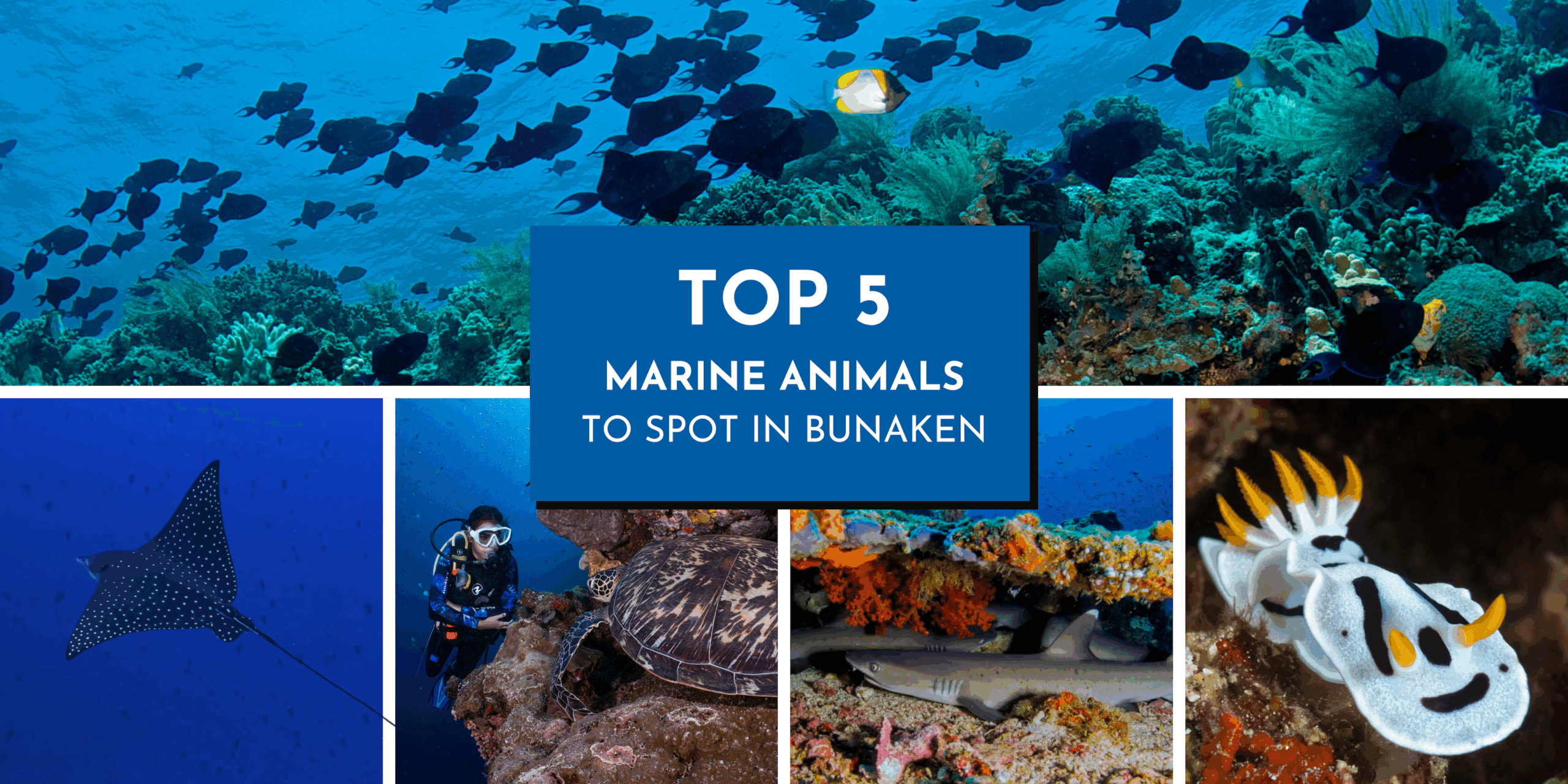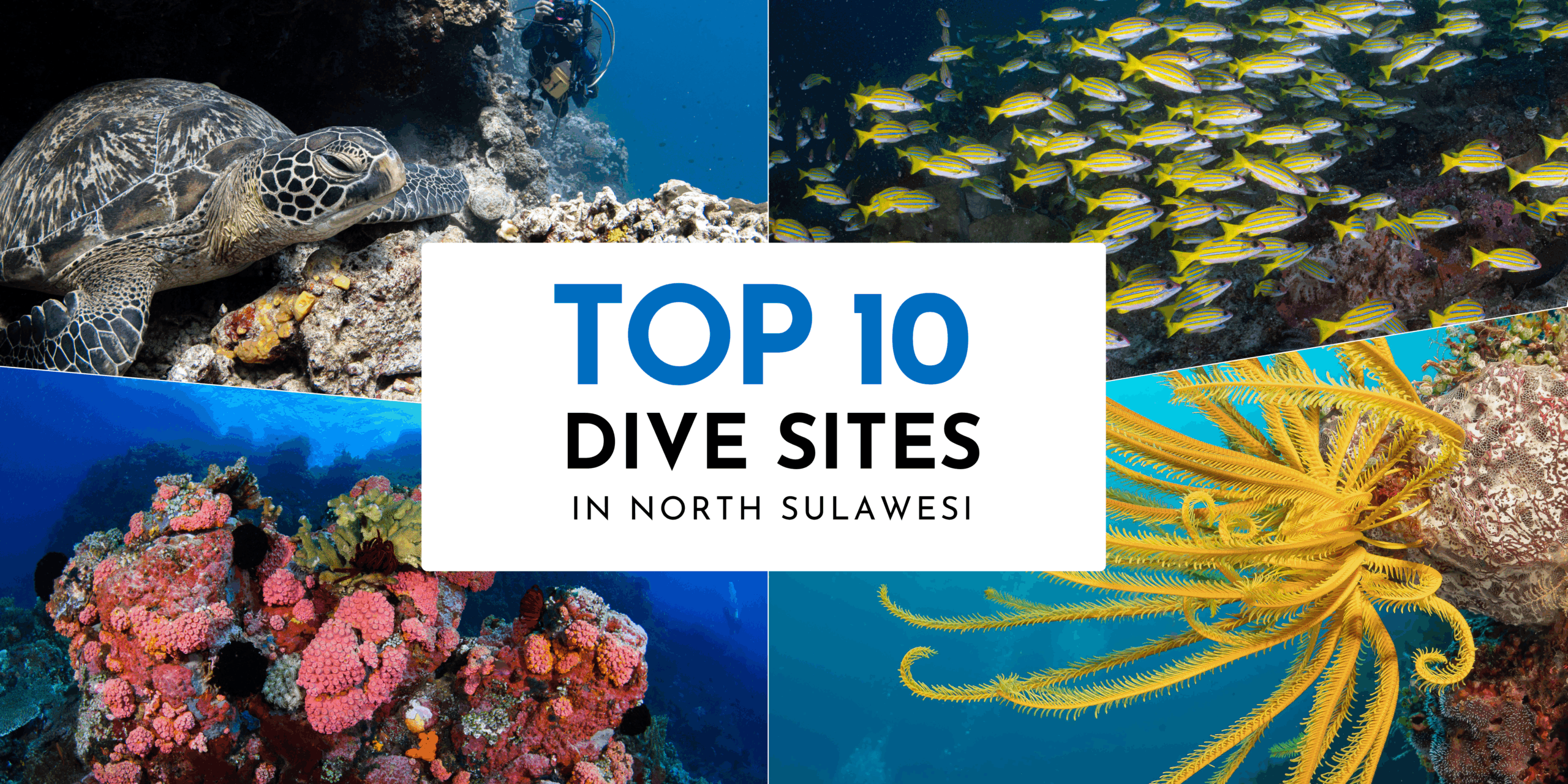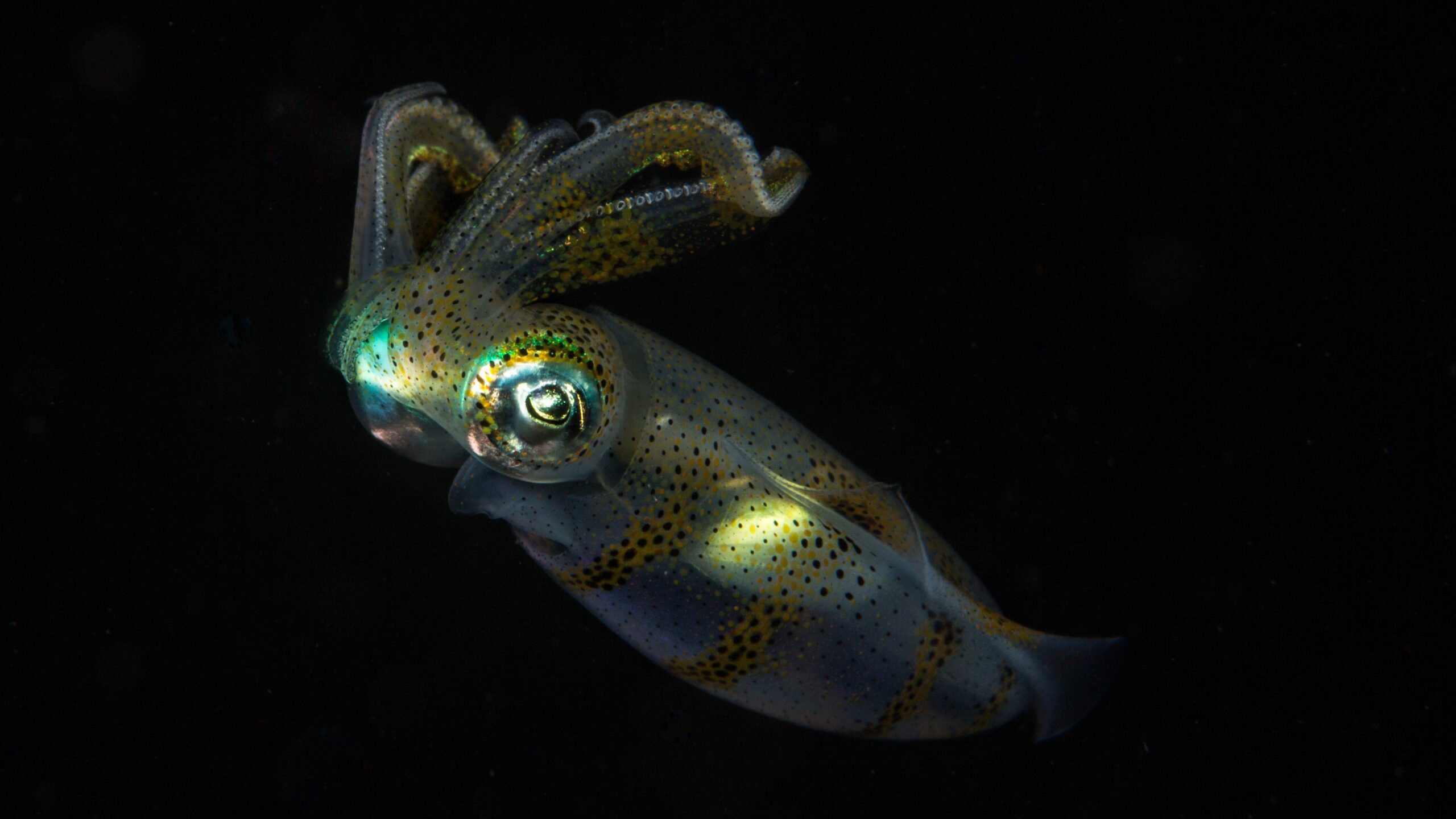
More Than Squids: These Squid Species Will Leave You Amazed
North Sulawesi sits at the heart of the coral triangle – an area that has the most diverse marine life on the planet. We not only have vibrant coral reefs and hundreds of fish and critters, we also have stunning cephalopods too! In this Blog, we take a look at three of our favorite squid species and what makes them each completely unique…
Squid Species in North Sulawesi
Squids are well known for their elusive nature and they have captured the curiosity of humans for centuries. These fascinating creatures, belonging to the cephalopod family, possess unique characteristics that set them apart from other marine animals. Squids have become the focus of scientific research, marine conservation efforts, and even popular cultural references.
From their incredible ability to change colors, to their high level of intelligence (making them fascinating creatures to study) they also have well-developed nervous systems which makes them capable of complex behaviors.
Bobtail Squid (Euprymna berryi)
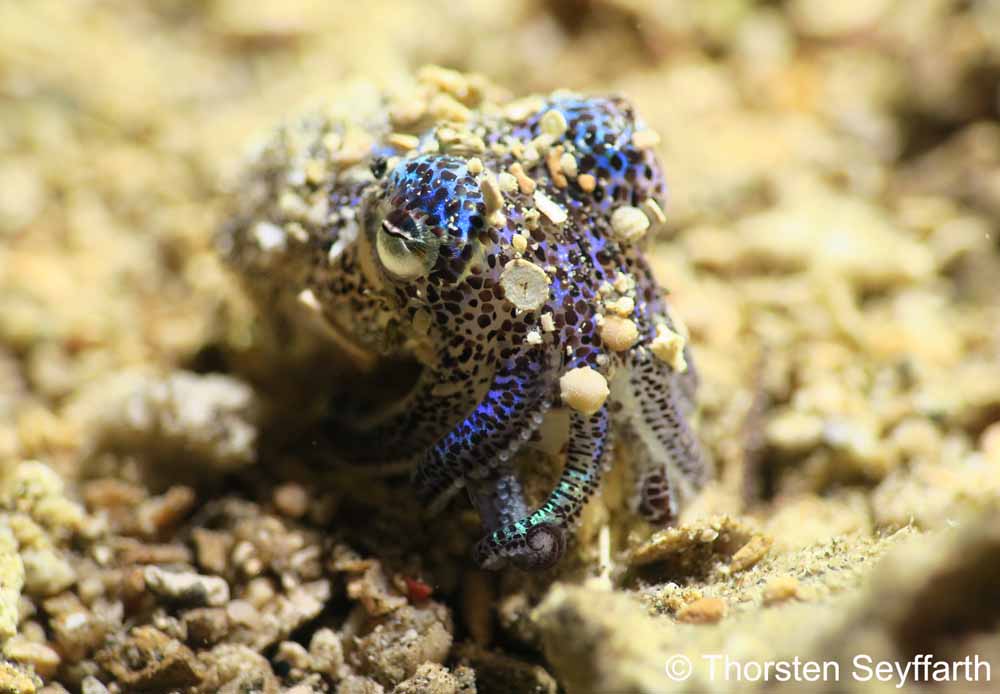
The bobtail squid is a real treat for both divers and underwater photographers. Despite its small size (up to just 5cm) it is one of our shiniest critters. Bobtail squid have a symbiotic relationship with bioluminescent bacteria which live in a light organ in their mantle – so they really do shine!
Spotting bobtail squid can be tricky due to their habit of using their miniature fins to bury themselves into the substrate and then using their arms to cover themselves with sand! They are most commonly spotted in the shallows at night – when they swim with their fins, or by jet propulsion, and their glow gives them away.
Pygmy Squid (Idiosepius paradoxus)

Pygmy squids are a species of Bobtail squid and are the smallest of all species of squid – they grow up to only 1.5cms! The best places to spot pygmy squids are among seagrass beds. Pygmy squids are known to attach to seagrass and soft corals using a special organ which they have on their mantles. They also lay their eggs on the underside of sea grasses.
This tiny species feeds on crustaceans – sometimes that are the same size as themselves! Although the pygmy squid is tiny, our team of dive guides know where to look for them. For photographers a good macro lens is highly recommended!
Bigfin Reef Squid (Sepioteuthis lessoniana)

This is one of the most commonly spotted squids here in North Sulawesi and they can be spotted in schools. The best places to spot them are in the shallows where they bask in the sunlight, and close to boat mooring lines on which they will lay their eggs. As the name suggests, they have extremely large fins which means they are frequently mistaken for cuttlefish. Similar to cuttlefish, they have a large oval fin that extends throughout the margins of the mantle.
Bigfin reef squid are a medium sized species and they average 3.8 cm to 33 cm in length. Most remarkable about this species is that they have the fastest recorded growth rate of any large marine invertebrate, reaching 600 g (1.3 lb) in only four months. Bigfin reef squid do not have long lifespans and, on average, they will expire at a maximum of just 315 days. They are a fun species to spot on night dives as they are attracted to divers’ dive lights – creating the perfect photo opportunity.
Blackwater Diving and Squid
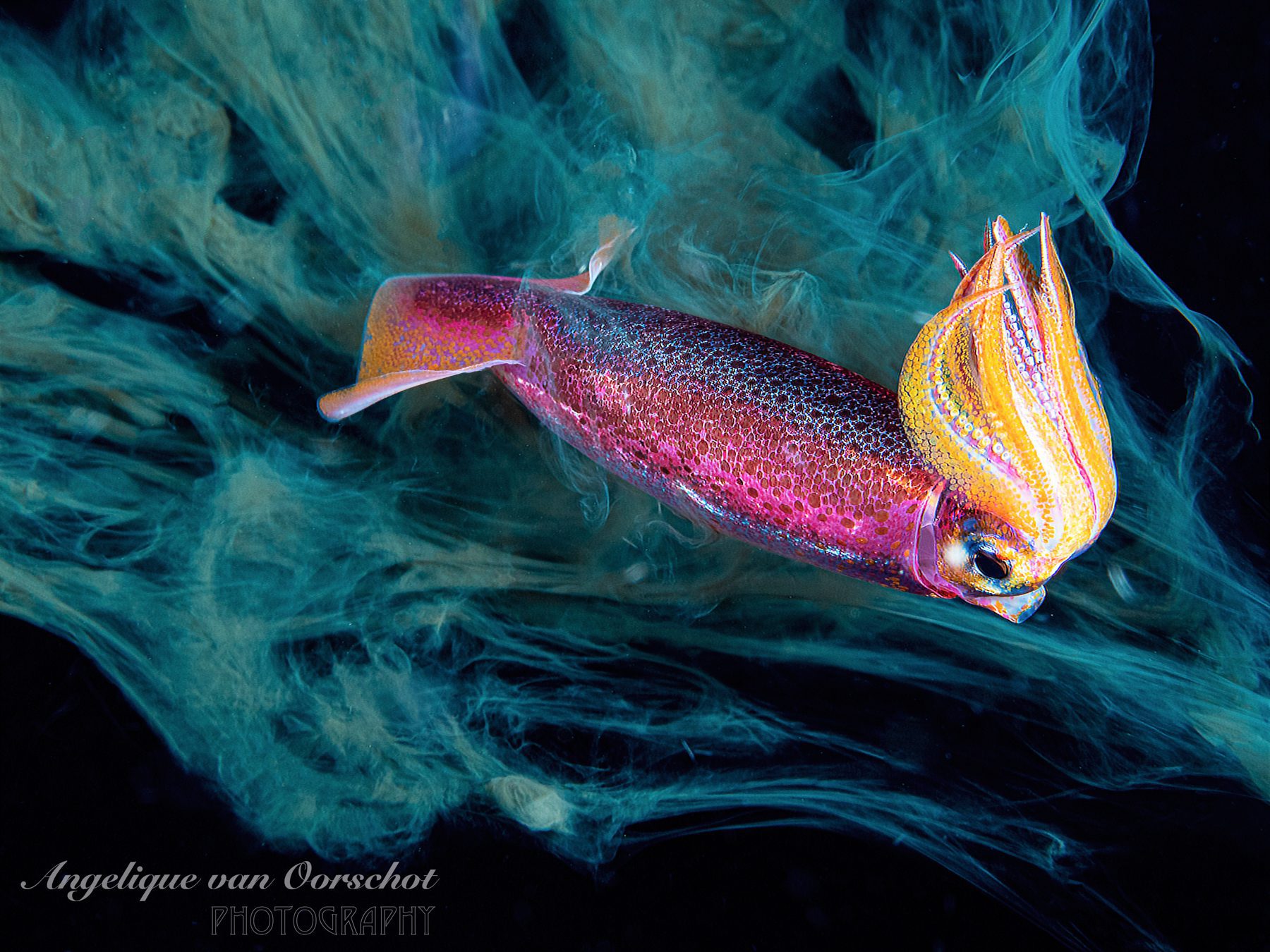
Blackwater diving is a relatively new way of diving where divers drift over the deep water column at night using powerful lights that are suspended beneath the boat. Plankton that rises up from the deep is attracted to the lights which in turn attracts other marine species.
During our blackwater dives we are extremely fortunate to see a lot of juvenile and transparent larvae stage marine species that have yet to settle on the reef. We often see different species of squid – in different life stages during these dives. They also make impressive underwater photography species!
North Sulawesi’s Best Dive Sites for Spotting Squid?

It’s possible to spot various species at all of our dive sites around Manado, Bunaken, Bangka and Lembeh. A few of our favorites include the House Reef in Bangka, Malalayang in Manado and Nudi Falls and Nudi Retreat in Lembeh.
If you are not sure where to stay, why not join us for a Passport to Paradise? Explore three distinct diving destinations in one easy trip: Bunaken, Bangka and Lembeh? Our resorts are connected by boat diving transfers which means no wasted travel time and even more diving time as you simply dive your way from resort to resort! Find out more about our Passport to Paradise packages.
Ready to get up close and personal with these amazing creatures? Contact us at reservations@murexresorts.com. Check out Murex Resort rates and reserve your spot now. Prepare to experience phenomenal diving with us in North Sulawesi.
Further Reading
If you enjoyed reading this article, you may also be interested in some of the following…


